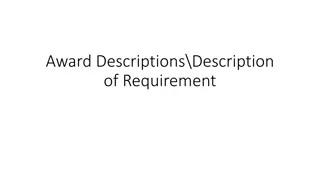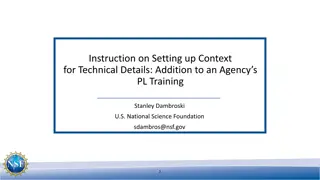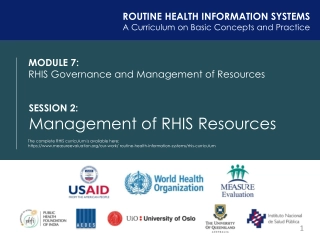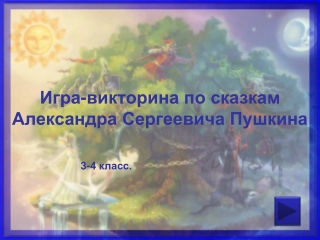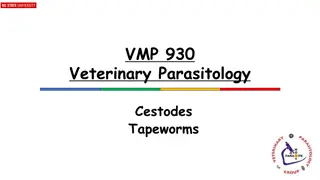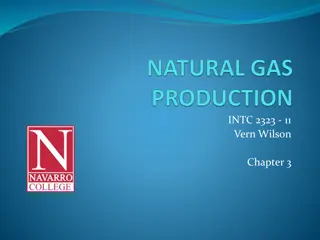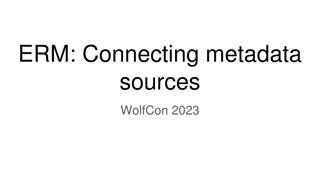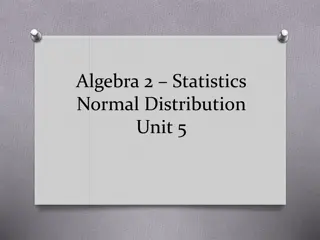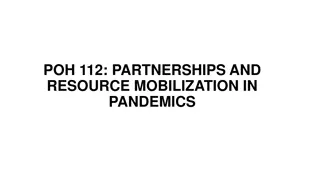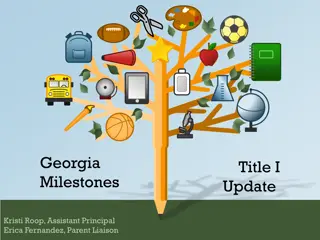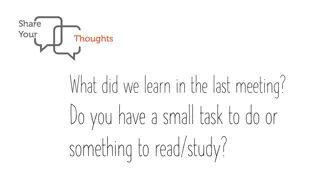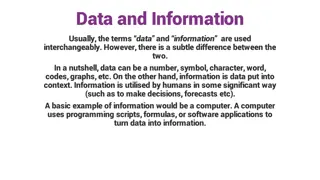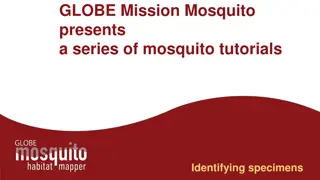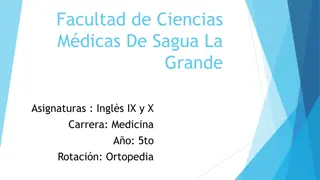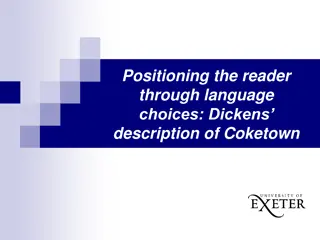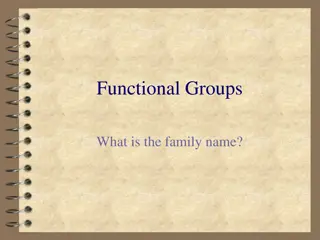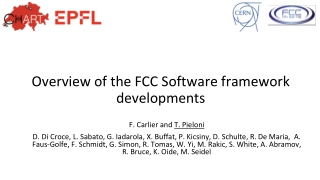Understanding Coherent Descriptions of Information Resources
Explore the importance of coherent descriptions in categorizing information resources into work, expression, manifestation, and item aspects. Learn how a well-formed description should conform to basic guidance for effective resource organization and retrieval according to RDA standards.
Download Presentation
Please find below an Image/Link to download the presentation.
The content on the website is provided AS IS for your information and personal use only. It may not be sold, licensed, or shared on other websites without obtaining consent from the author. Download presentation by click this link. If you encounter any issues during the download, it is possible that the publisher has removed the file from their server.
Presentation Transcript
Module 10 Coherent and Minimum Coherent and Minimum Descriptions Descriptions RDA Training Task Group: Monographs Standing Committee on Training December 2023 This work is licensed under CC BY 4.0. To view a copy of this license, visit: http://creativecommons.org/licenses/by/4.0/ 1
Learning Outcomes At the end of this module, you will be able to: Differentiate between an information resource and a resource entity Understand coherent description, minimum description, and effective description Identify elements required for a coherent description, minimum description, and effective description 2
Coherent descriptions of information resources + Minimum descriptions of resource entities 3
In the Toolkit, navigate to Resource description from the Guidance menu 4
Information resource description The characteristics of an information resource are categorized by four aspects represented by the resource entities: Work, Expression, Manifestation, and Item. 37.27.03.93 - https://access.rdatoolkit.org/en-US_ala-34a6d2a9-e9d8-30d7-888f-430ddb8be5a9/p_ycb_t5b_ydb Work These four resource entities represent the aspects of an information resource Expression Manifestation Item 5
Coherent description of an information resource A well-formed description of an information resource should conform with the basic guidance and instructions for constructing and relating its component aspects. 39.67.45.34 - https://access.rdatoolkit.org/en-US_ala-34a6d2a9-e9d8-30d7-888f-430ddb8be5a9/section_iqs_l22_zdb Work Expression Manifestation Item 6
A well-formed description A well-formed RDA metadata statement can be formatted in a basic subject-predicate-object syntax, where the subject is the entity being described, the predicate is the characteristic being recorded, and the object is the recorded value of the characteristic. 42.44.99.42 - https://access.rdatoolkit.org/en-US_topic_v3l_3wv_xmb/p_d5q_cfh_nlb Example: Manifestation <has work manifested> Hemingway, Ernest, 1899-1961. For whom the bell tolls A manifestation is being described and related to the work manifested represented by an authorized access point for work. 7
Elements for a coherent description of an information resource Work: expression of work Work Work: manifestation of work Expression: work expressed A shortcut relationship Manifestation: work manifested Expression Expression: manifestation of expression Manifestation Manifestation: expression manifested Manifestation: exemplar of manifestation Item Item: manifestation exemplified 8
Relating component aspects of a single information resource cardinality restrictions that should apply Expression Work An expression must realize only one work. Manifestation A manifestation must embody at least one expression. Expression Manifestation A manifestation must embody at least one work. This shortcut relationship implies the existence of at least one expression. Work Item An item must exemplify only one manifestation. Manifestation 9
Relating to entities that describe different information resources There are no restrictions for a coherent description when a relationship element is used to relate entities that describe different information resources. 43.18.04.90 - https://access.rdatoolkit.org/en-US_ala-a346012c-977a-3e23-b4dc-5ff172928f33/div_spv_qdd_p2b Expression Manifestation Item Work Expression Manifestation Manifestation Expression Item Example: Manifestations published by different publishers for the same expression. Example: English expression and French expression of the same work. Example: Two copies of the same manifestation held by a library. 10
Minimum coherent description A coherent description of an information resource must include a description of at least one of its entities. An entity is described by recording a value for at least one appellation element of the entity using the recording method appropriate for the element. 83.32.91.26 - https://access.rdatoolkit.org/en-US_ala-a346012c-977a-3e23-b4dc-5ff172928f33/section_djl_c5c_p2b Appellation element (a human-readable value) a name or title (unstructured description) an access point (structured description) an identifier 11
Minimum coherent description of an information resource At least one of the resource entities must be described using at least one appellation element. Example: Manifestation <has title proper> For whom the bell tolls Title proper is an appellation element for a manifestation. It is recorded using an unstructured description. 12
Minimum metadata description set of an entity: Focus on Manifestation Two elements for this resource entity are required: At least one Manifestation: appellation of manifestation element or its subtypes (title, access point, identifier) At least one of Manifestation: expression manifested or Manifestation: work manifested (either identified by an appellation element or an IRI) 13
Minimum metadata description set of a manifestation Example: Manifestation <has title proper> For whom the bell tolls Manifestation <work manifested> Hemingway, Ernest, 1899-1961. For whom the bell tolls 14
Minimum metadata description set of an entity: Focus on Work Two elements for this resource entity are required: At least one Work: appellation of work element or its subtypes (title, access point, identifier) At least one of Work: expression of work or Work: manifestation of work (either identified by an appellation element or an IRI) 15
Minimum metadata description set of an entity: Focus on Expression Three elements for this resource entity are required: At least one Expression: appellation of expression element or its subtypes (title, access point, identifier) An Expression: work expressed element (work identified by an appellation element or an IRI) An Expression: manifestation of expression element (manifestation identified by an appellation element or an IRI) 16
Minimum metadata description set of an entity: Focus on Item Two elements for this resource entity are required: At least one Item: appellation of item element or its subtypes (title, access point, identifier) An Item: manifestation exemplified element (manifestation identified by an appellation element or an IRI) 17
Effective description step 1 An RDA description of an information resource is well-formed if it conforms to the requirements of a coherent description of an information resource and at least one of its resource entities conforms to a minimum description of a resource entity. 45.52.73.18 - https://access.rdatoolkit.org/en-US_ala-40e2ca7b-8b9d-3491-8b2c-fed9e99c286c/section_ahq_cxb_ydb 18
Effective description step 2 Add other elements to descriptions of one or more resource entities that are deemed useful for identification or access. Add descriptions of other entities to a coherent description of a resource that are deemed useful for identification or access. 45.52.73.18 - https://access.rdatoolkit.org/en-US_ala-40e2ca7b-8b9d-3491-8b2c-fed9e99c286c/section_ahq_cxb_ydb For general guidance on well-formed data and conformance with RDA, see Guidance: Well-formed RDA. 19
Objectives of effective and minimum descriptions From Guidance: Well-formed RDA Objectives of an effective description: accuracy, common usage or practice, internationalization, responsiveness to user needs, and sufficiency Objectives of a minimum description: cost efficiency, relationships, and representation 20
Minimum description of a manifestation an appellation for the manifestation, and either the work manifested or the expression manifested: Manifestation <has work manifested> Hemingway, Ernest, 1899-1961. For whom the bell tolls Manifestation <has title proper> For whom the bell tolls 100 1_ $a Hemingway, Ernest, $d 1899-1961 245 10 $a For whom the bell tolls Elements that can be added for an effective description of the information resource (for any of the resource entities such as work and manifestation): Work <has author person> Hemingway, Ernest, 1899-1961 100 1_ $a Hemingway, Ernest, $d 1899-1961 Manifestation <has statement of responsibility relating to title proper> Ernest Hemingway 245 10 $a For whom the bell tolls / $c Ernest Hemingway Manifestation <has place of publication> New York Manifestation <has name of publisher> Scribner Manifestation <has date of publication> 1996 264 _1 $a New York : $b Scribner, $c 1996 Manifestation <has extent of manifestation> 495 pages Manifestation <has dimensions> 24 cm 300 $a 495 pages ; $c 24 cm 21
Summary An information resource is the object that contains information and is part of a collection. A resource entity is an aspect of that resource, such as the work, expression, manifestation, and item entities. A coherent description records the relationships of the four aspects of an information resource: work, expression, manifestation and item. A minimum description records a human-readable appellation of one resource entity, as well as relationships between that entity and other entities covered by a coherent description of the resource. An effective description records all other elements deemed useful for identification or access, including relationships to other resources. 22


